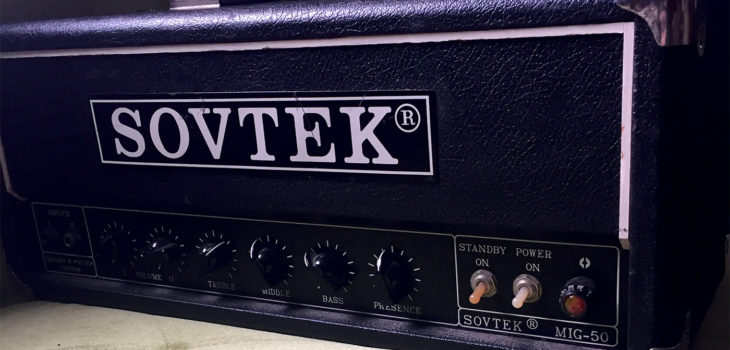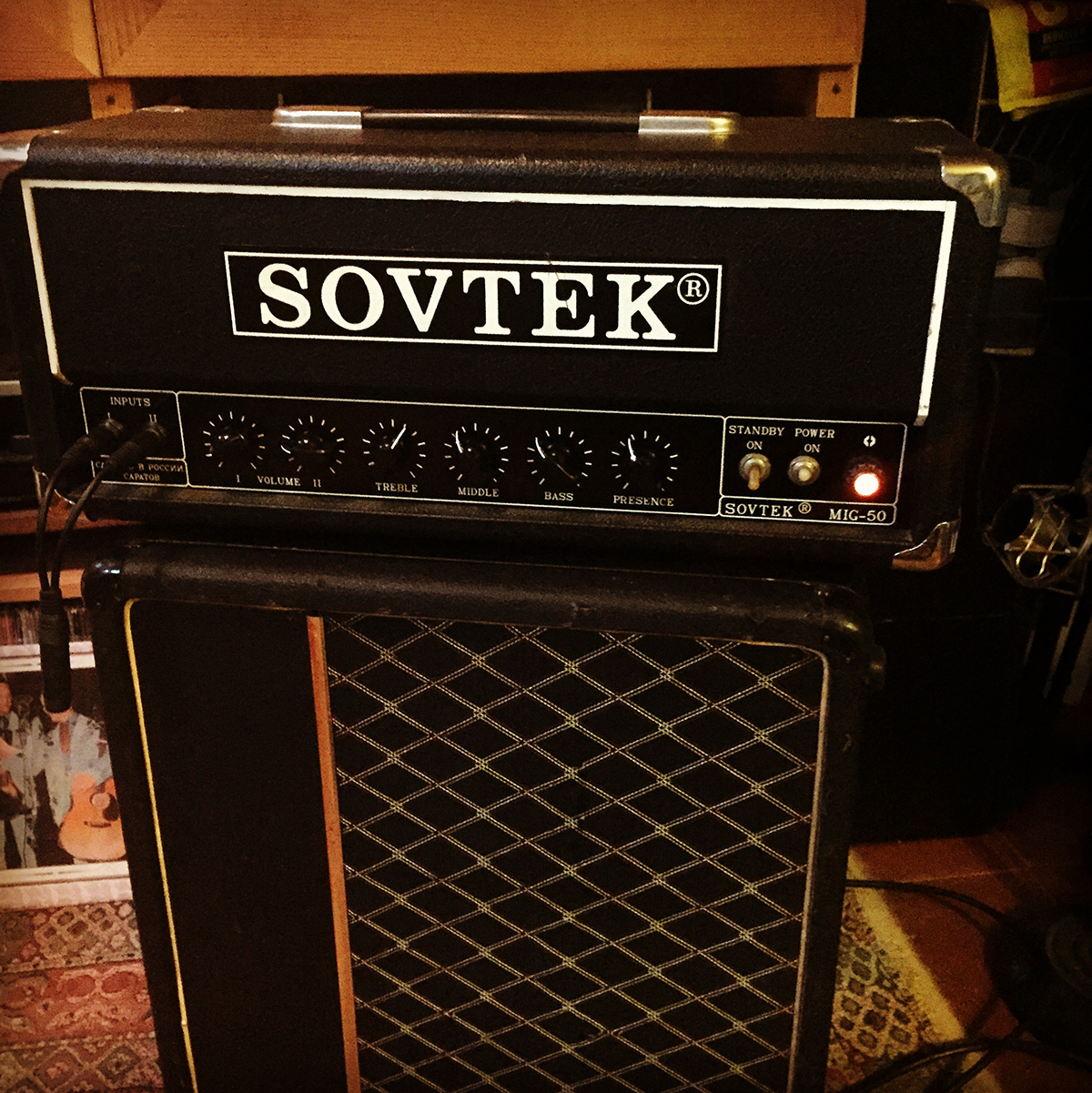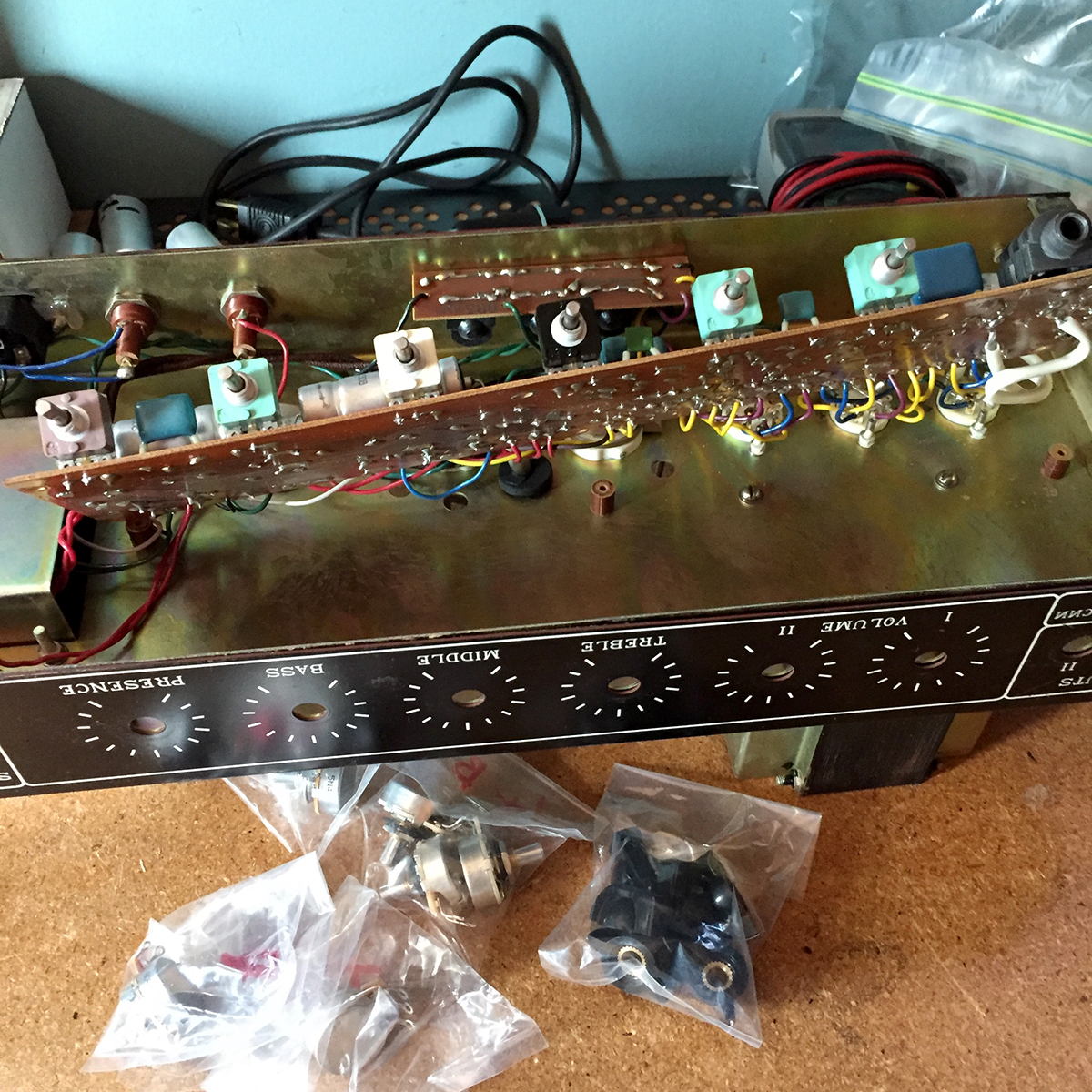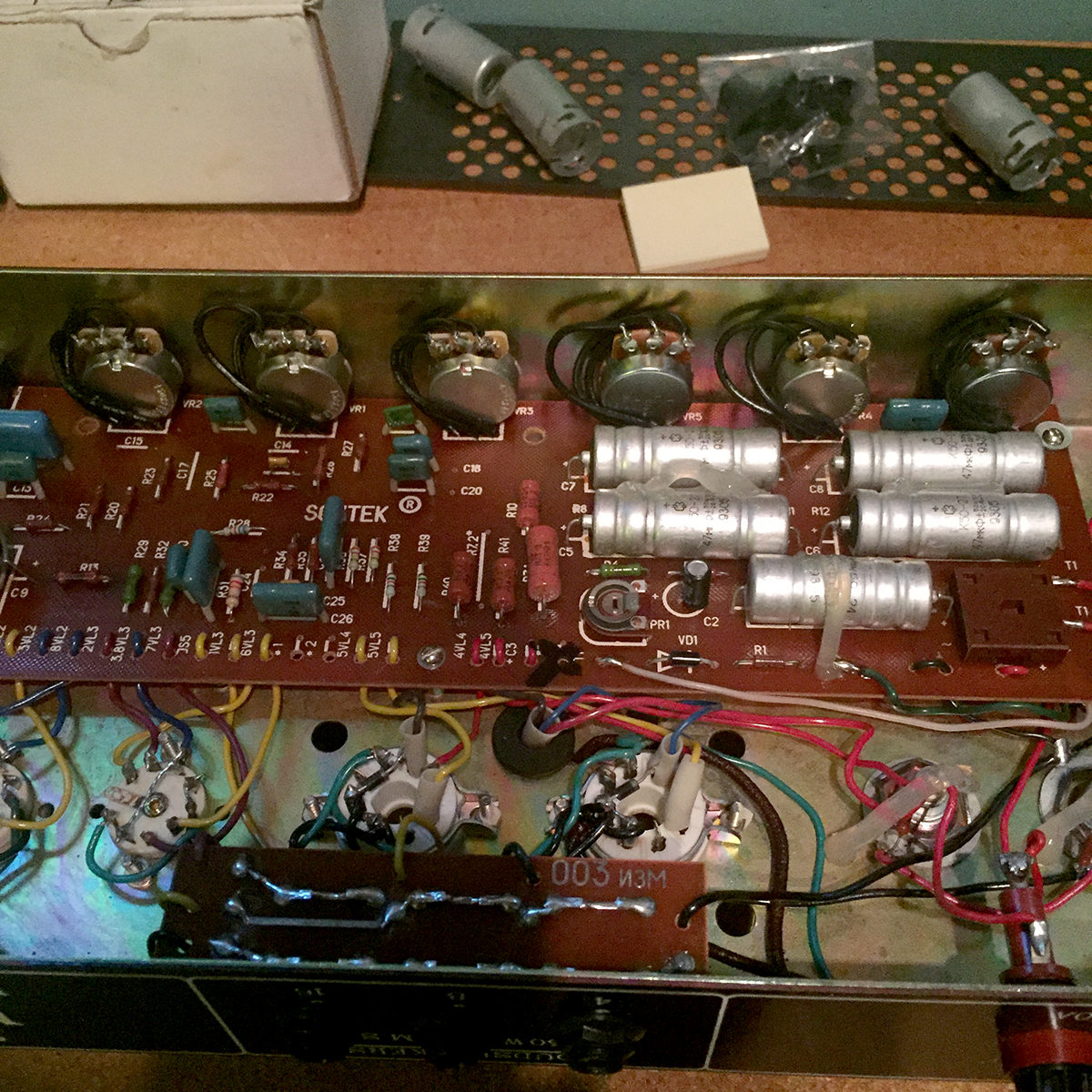
My Sovtek MIG 50: Strong Like Russian Tank (Or…
Some time in 1997 I lined up 3 Fender Bassman heads and this Sovtek Mig 50 in a large room in the vintage guitar shop I was working at. I had a 1964 Fender Princeton and needed a larger amp for larger venues. I was a huge fan of the blackface/silverface Bassman heads. I still am. I don’t recall the years of those Bassmans but I do remember there being 1 blackface and two silverfaces. I hooked them one at a time into a cabinet (I don’t recall the cab size or speaker configuration).
All 3 of the Bassmans sounded great. I would have been happy with any of them but the Mig 50 had something else going on. Something in the midrange that was not present in the Bassmans. I ended up getting the Mig 50. The shop was a dealer and it was brand new. I don’t recall what I paid but do recall that there didn’t seem to be an astronomical difference between all 4 amps.
I love this amp. I paired it with a what appears to be a mid to late 60s Vox Berkeley 2 x 10 cab loaded with Celestion G10S-50s. This rig is super easy to manage and sounds great in any setting.

The Mig 50s circuit is pretty much a Fender tweed Bassman/Marshall JTM-45. It uses 2 5881 power and 3 12ax7 preamp tubes. It has a solid state rectifier and is LOUD AF. In the 20+ years I’ve had this amp I’ve never been able to run it with the volume past 3 or 4. It’s a shame because it sounds pretty amazing at about 7 or 8. I recall doing an outdoor gig in Boise and turning it up half way. It sounded so great but the sound person nearly had a heart attack and made me turn it down.
You might be thinking “why do you use an amp that you can’t use cranked to its full power tube distortion potential”. One thing that is absolutely killer about this amp is that if I put a Tube Screamer with the gain turned all the way down and the level cranked this amp sounds nearly identical to how it sounds when cranked. It has the same level of compression and dynamics that I get from cranking it but at a reasonable club volume.
This amp/speaker combo has been my live sound since ’97. I’ve used smaller rigs depending on what the group/gig called for but every rock show I’v e done since ’97 featured this amp.
One quirk I’ve found with this amp is that the low channel is a tad too dark on its own and the bright channel is a tad too bright. I’ve always used this amp with its channels jumpered. Depending on the guitar I’ll favor one channel and bring the other in just a tad to balance things.
I recall reading about these amps in Guitar mags back in the 90s. The consensus was that these were really cool amps but might not be the most dependable given some of the parts/construction methods. I found this to be absolutely the opposite. The dependable part that is. They were right about some of the parts/construction. The only issue I’ve ever had with the MIG was about 3 years ago one of the volume pots died. This wasn’t a huge surprise. The Russian pots in these are really cheap and cheesy. I had fully expected to be changing them at some point back when I purchased the amp. Turns out they lasted 20 years more than I figured they would.
When I changed the broken volume pot I decided to replace all of the amp’s pots. The pot terminals on these are connected directly to the circuit board (like 80s + Marshalls) I decided to chassis mount the new pots. I flew wires from the circuit board to the new chassis mounted pot terminals. Now it’s more solid than ever.


Another thing that’s amazing about this amp – I have only changed tubes in it once in these 20 some years. And I did that not because of experiencing any mechanical or performance issues but because I thought I probably should. There was no sonic change in the amp after installing fresh tubes. This amp has sounded great from the moment I plugged into it in ’97 right up through last night’s gig. It is solid.
I’d still love a blackface or silverface Fender Bassman and who knows maybe one will fall into my web one day but until then (and after) this Mig 50 will be a keeper.